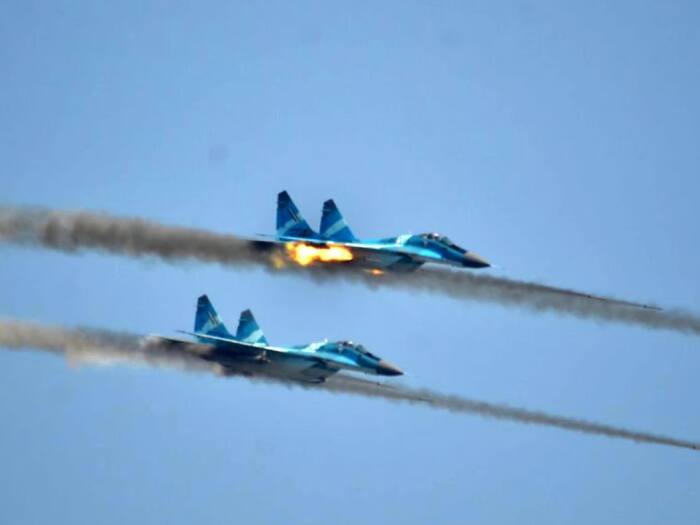
[ad_1]
“This afternoon, at my direction, US military forces struck targets at facilities in Iraq and Syria that the IRGC and affiliated militia use to attack US forces,” Biden said in a statement.

The United States has conducted a series of airstrikes against Iran-backed militias in Iraq and Syria. These strikes were carried out in retaliation for a drone attack that resulted in the death of three American soldiers in Jordan. However, it is important to note that no targets in Iran were struck, despite calls for such action. These initial strikes are just the beginning, as the US has stated that more retaliatory measures will follow.
The decision to conduct these airstrikes came shortly after the arrival of the bodies of the three American personnel killed in the drone strike. President Joe Biden and First Lady Jill Biden joined the families of the fallen soldiers at a military base in Delaware for a dignified transfer ceremony. Although the strikes occurred shortly after this solemn occasion, news reports suggest that they were not directly linked.
In a statement, President Biden confirmed that he had ordered the strikes on facilities in Iraq and Syria that are used by the Islamic Revolutionary Guards Corps (IRGC) and its affiliated militias to attack US forces. He emphasized that this was just the beginning of the response and that future actions would be carried out at the US’s discretion.
“This afternoon, at my direction, US military forces struck targets at facilities in Iraq and Syria that the IRGC and affiliated militia use to attack US forces,” Biden said in a statement, referring to Iran’s Islamic Revolutionary Guards Corps.
He added: “Our response began today. It will continue at times and places of our choosing.”
Defense Secretary Lloyd Austin also issued a separate statement, stating that these strikes marked the start of the US’s response. He further mentioned that the President had directed additional actions to hold the IRGC and affiliated militias accountable for their attacks on US and Coalition Forces. “This is the start of our response. The President has directed additional actions to hold the IRGC and affiliated militias accountable for their attacks on US and Coalition Forces. These will unfold at times and places of our choosing.”
The US Central Command, responsible for carrying out the retaliatory attacks, reported that a total of 85 targets were hit. These targets included the IRGC’s Quds Force, which is known for conducting unconventional warfare and running militias to serve its interests abroad. The US utilized long-range B-1 bombers to carry out the airstrikes, as these aircraft have the capacity to carry a significant volume and quantity of munitions.
The facilities that were targeted in the strikes included command and control operations centers, intelligence centers, rocket and missile storage, unmanned aerial vehicle storage, as well as logistics and munition supply chain facilities. These facilities belonged to various militia groups and their IRGC sponsors.
As tensions between the US and Iran continue to escalate, it remains to be seen how Iran will respond to these airstrikes. The US has made it clear that it does not seek a war with Iran, which is likely why targets within Iran were not included in the strikes. The coming days and weeks will reveal the full extent of the US’s response and the impact it will have on the region.
[ad_2]